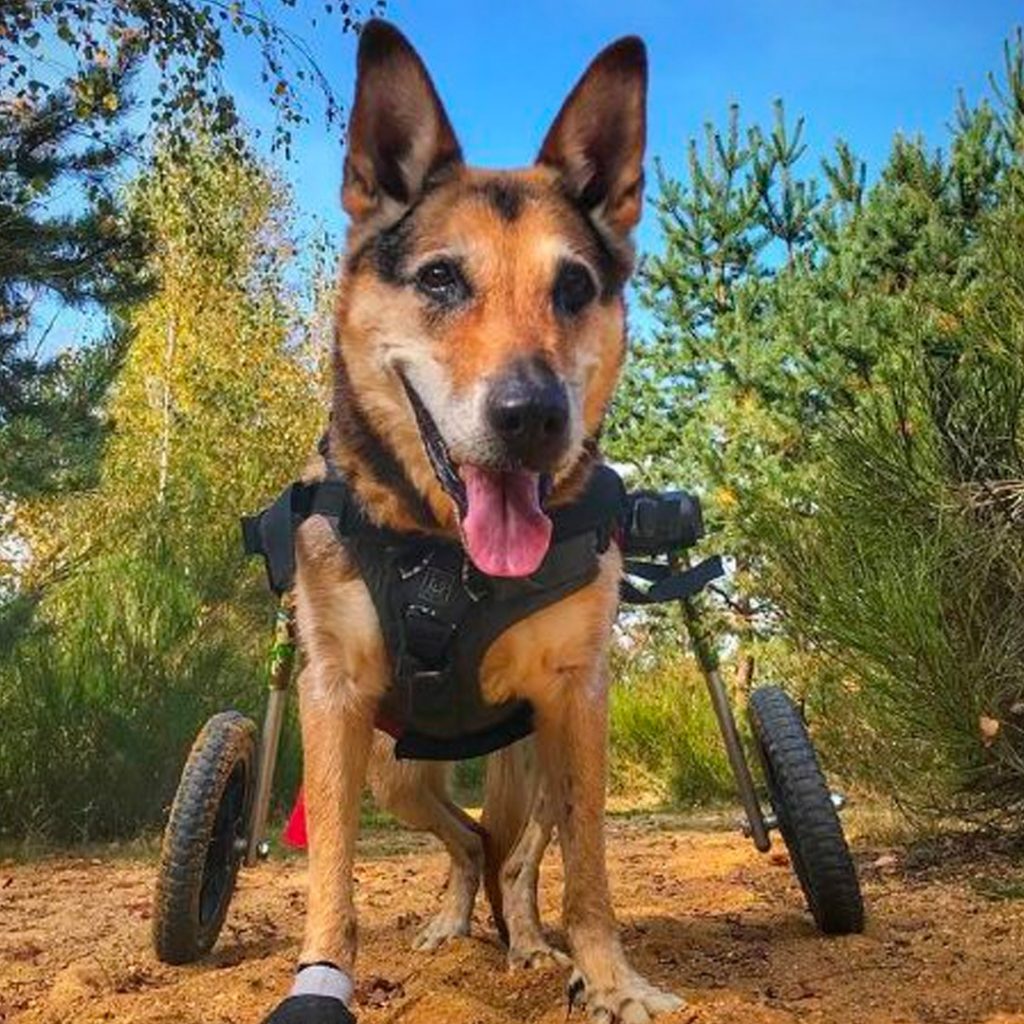The Gold Standard in Physiotherapy and Hydrotherapy for dogs
The Gold Standard in Physiotherapy and Hydrotherapy for dogs

Degenerative myelopathy is a chronically progressive neurodegenerative disease that occurs in several breeds. There is no known trigger, cause or treatment other than supportive treatment and unfortunately the prognosis is poor. Unlike other pathologies such as neoplasia or degenerative disc disease, this condition is not associated with any pain or discomfort.
Affected dogs may show signs of:
Sadly, the final diagnosis can only be reached post mortem.
To make a provisional diagnosis your vet will rely on the clinical history and exclusion of other potential issues. Typically – in addition to a complete history – physical, neurological and orthopaedic examinations, blood tests and MRI scans are initially performed. More recently, a DNA test became available to identify the SOD-1 gene
The only therapy proven to improve quality of life and increase survival time is physiotherapy and appropriate supportive care (which varies depending on how affected the patient is). In animals that are still able to walk unassisted protection of the digits may be enough whereas in cases where the patient needs support, slings and harnesses can be used. In cases where continence is lost it is paramount to keep the animal clean and dry, and when not able to walk, changing their position when laying down and monitoring for pressure sores is essential.
Rehabilitation therapy is a key component in helping aid the recovery from neurological diseases. Once the vet has diagnosed your pet and completed any surgeries, our team can can step in to aid the long road to recovery.
Initial therapy may include standing exercises, as well as range of motion exercises. These are complimented with pain control and toe pinch exercises. An important part of the retraining is aquatic rehabilitation. Often, with more severe cases, one of our trained neurological hydro therapists will assist the dog whist in our underwater treadmill.
Other exercises include balance exercises, core stability and spacial resistance band walking, physio-roll balancing and home specific exercises. In the hydrotherapeutic environments, the dogs will walk and train with resistance against the water, whether walking or swimming. We also use therapeutic electrotherapies to deep-heat muscles, cryotherapy and laser therapy to aid the recovery process.
Our friendly and skilled physiotherapists are ready to help you and your dog with their rehabilitation.
The content on this page is for advice and information only and does not represent veterinary guidance or direction. Please always consult a veterinary surgeon if you are worries about your dog.